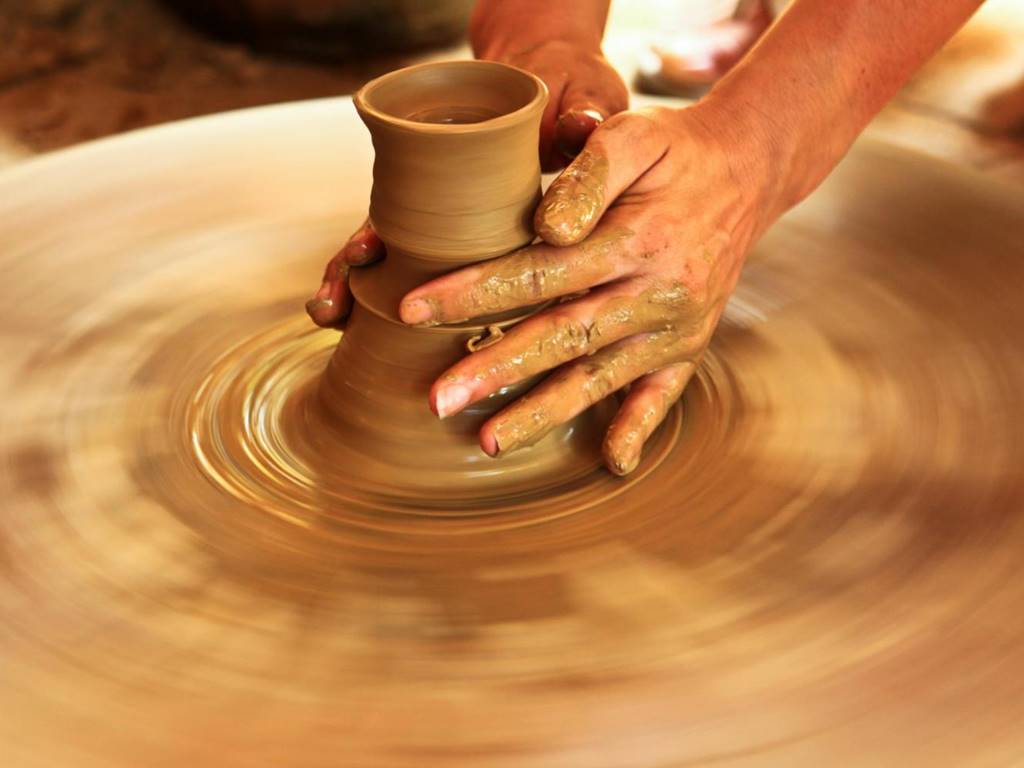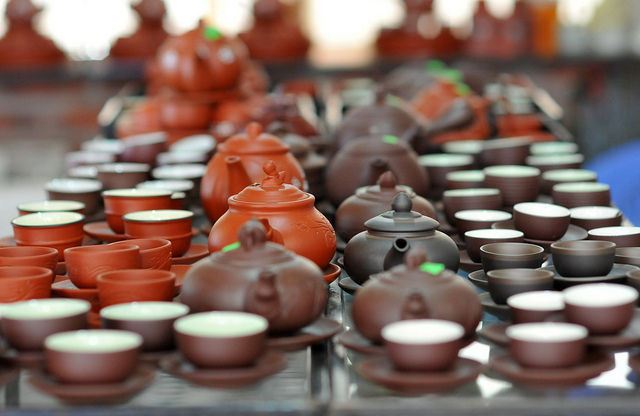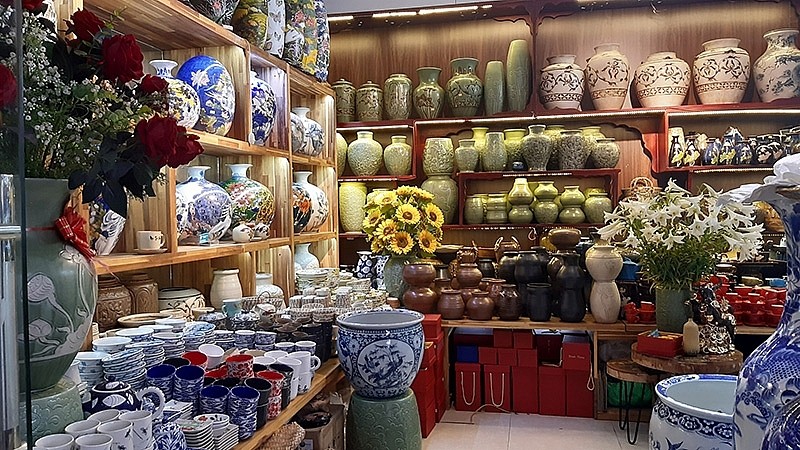News
Explore the Unique Types of Bat Trang Ceramics
Bat Trang ceramics hold a distinctive place in the world of pottery and ceramics, symbolizing centuries of Vietnamese culture and craftsmanship. Known for their exquisite designs and durable quality, Bat Trang ceramics have captured the admiration of collectors, artists, and everyday users alike. This article delves deep into the unique types of Bat Trang ceramics, exploring their historical background, techniques, styles, and cultural significance, while highlighting how these traditional crafts continue to evolve in modern times.
Historical Background and Cultural Significance of Bat Trang Ceramics

Before diving into the specific types of Bat Trang ceramics, it’s essential to understand the rich history and cultural importance that underpin this craft. Originating from Bat Trang village near Hanoi, Vietnam, this ceramic tradition dates back over 700 years. The village’s abundant natural resources, especially high-quality clay, helped establish it as a renowned ceramics hub.
The cultural meanings embedded within Bat Trang ceramics extend beyond aesthetic value; they are expressions of daily life, spirituality, and social customs. The legacy of Bat Trang continues to shape Vietnamese identity and artistic expression, making each piece not only a functional item but also a cultural artifact.
Early Development and Evolution Through Dynasties
The origins of Bat Trang ceramics can be traced back to the Ly and Tran dynasties (11th to 14th centuries). During these periods, ceramics were predominantly utilitarian but began to incorporate artistic flourishes inspired by religious motifs and royal aesthetics.
As dynasties changed, Bat Trang potters adapted new techniques such as underglaze painting and celadon glazing, reflecting external influences from China, Japan, and Korea. These developments ushered in more refined styles and complex forms, signaling the village’s growing reputation.
This evolution illustrates the dynamic nature of Bat Trang ceramics: they are products of cultural exchange and innovation, continuously refined through generations.
Spiritual and Social Roles in Vietnamese Society
Bat Trang ceramics often play vital roles in Vietnamese rituals and social ceremonies. Items like incense burners, votive bowls, and altar sets are integral to spiritual practices, symbolizing respect and reverence for ancestors and deities.
Moreover, certain ceramic patterns and shapes carry auspicious meanings, believed to bring luck, prosperity, or protection. For instance, lotus petals symbolize purity, while dragon motifs represent power and nobility.
Beyond religious contexts, ceramics from Bat Trang are also central to household life—used for cooking, serving food, and decoration. This dual functionality underscores their importance as both sacred objects and everyday companions.
Preservation Efforts and Modern Recognition
In recent decades, there has been an increased effort to preserve and promote Bat Trang ceramics as part of Vietnam’s intangible cultural heritage. Government initiatives, local artisans’ cooperatives, and international exhibitions have all contributed to raising awareness and sustaining the craft.
Modern designers and artists are blending traditional techniques with contemporary aesthetics, creating pieces that appeal to global markets while maintaining authenticity.
This balance between preservation and innovation ensures that Bat Trang ceramics remain relevant and cherished, honoring the past while embracing the future.
Distinctive Styles and Techniques of Bat Trang Ceramics

The hallmark of Bat Trang ceramics lies in their diverse styles and technical mastery. Each style reflects both the artisan’s skill and the cultural narrative embedded within the work. Understanding these distinctive styles helps appreciate why Bat Trang ceramics stand out among other pottery traditions worldwide.
Traditional Underglaze Blue Painting
One of the most iconic styles of Bat Trang ceramics is the underglaze blue painting technique. This method involves applying cobalt oxide pigment onto raw pottery before glazing and firing. The result is a brilliant blue design beneath a smooth transparent glaze.
The motifs often include floral patterns, animals, landscapes, or folkloric symbols. Artisans meticulously paint fine lines using brushes, requiring steady hands and a keen eye for detail.
This style’s enduring popularity stems from its timeless elegance and visual contrast, showcasing the intersection of technical precision and artistic expression.
The underglaze technique also offers durability, as the design is protected beneath the glaze rather than painted on the surface. Collectors prize these pieces for their intricate beauty and lasting quality.
Celadon Glazing and Its Symbolism
Celadon glazing is another defining feature of Bat Trang ceramics, characterized by a jade-green translucent finish. This technique dates back centuries and is deeply influenced by Chinese Song dynasty ceramics.
Achieving the perfect celadon glaze requires precise control of kiln temperature and atmosphere, creating subtle variations in color and texture. The green hue symbolizes tranquility, harmony, and renewal.
In Bat Trang, celadon ceramics commonly take forms such as vases, bowls, and figurines. Their soothing colors and smooth surfaces evoke natural elements like water and leaves, making them popular for home decoration and tea ceremonies.
Celadon pieces are admired not only for their aesthetic appeal but also for embodying philosophical concepts rooted in East Asian culture.
Modern Innovations and Mixed Media
While tradition forms the foundation of Bat Trang ceramics, contemporary artists have embraced innovation by experimenting with new materials, shapes, and decorative techniques.
Some artisans combine ceramics with glass, metal, or wood to create mixed media artworks. Others use digital printing or laser engraving to add intricate patterns that would be difficult to achieve by hand.
These innovations serve multiple purposes: expanding creative possibilities, appealing to younger audiences, and positioning Bat Trang ceramics within the global art market.
Despite these changes, many artists remain deeply respectful of traditional methods, ensuring that modern designs still reflect Bat Trang’s cultural essence.
Table: Comparison of Bat Trang Ceramic Styles
| Style | Technique | Typical Colors | Symbolic Meanings | Common Forms |
|---|---|---|---|---|
| Underglaze Blue | Cobalt oxide under glaze painting | Blue and white | Purity, nature, folklore | Plates, bowls, jars |
| Celadon | Translucent jade-green glaze | Jade green | Harmony, renewal, tranquility | Vases, tea sets, figurines |
| Mixed Media Modern | Combination with other materials and digital techniques | Various (multicolor) | Innovation, fusion of tradition and modernity | Sculptures, decorative pieces |
Key Types of Bat Trang Ceramics: Forms and Functions

Bat Trang ceramics encompass a wide array of forms, each designed for particular functions in everyday life or ceremonial contexts. Exploring these types provides insight into how form complements function and cultural symbolism.
Domestic Pottery: Everyday Use and Practicality
Domestic pottery constitutes a significant portion of Bat Trang’s output. Items such as rice bowls, teapots, jars, and cooking pots are crafted for daily use, demonstrating the blend of utility and artistry.
The clay used in domestic pottery is selected for durability and heat resistance. Many pieces feature simple yet elegant decorations that enhance the dining experience without compromising usability.
This category highlights the practical wisdom of Bat Trang artisans, who prioritize ergonomic design alongside aesthetic appeal.
Such pottery serves as a bridge connecting the artisan’s craft to the rhythms of daily Vietnamese life, reinforcing community bonds around shared meals and traditions.
Religious and Ritual Objects
Religious ceramics from Bat Trang include incense holders, altar lamps, ceremonial cups, and statues representing Buddhist or Taoist figures.
These pieces are often richly decorated with symbolic motifs and created with heightened attention to detail, reflecting their sacred role.
Crafting religious ceramics demands not only technical proficiency but also spiritual sensitivity, as these objects serve as conduits between the material and spiritual worlds.
Their presence in temples and homes underscores the intertwining of faith and craftsmanship in Vietnamese culture.
Decorative and Artistic Pieces
Decorative ceramics from Bat Trang go beyond function and enter the realm of pure aesthetic appreciation. These include wall plaques, ornamental vases, and sculptural forms.
Artisans experiment with innovative glazes, carving techniques, and painted scenes, often depicting rural life, mythology, or abstract patterns.
These pieces find their way into galleries, private collections, and interior design projects worldwide.
They exemplify Bat Trang’s capacity for artistic expression and contribute to expanding the boundaries of Vietnamese ceramics.
Functional vs. Aesthetic: The Balance in Bat Trang Ceramics
A critical contemplation of Bat Trang ceramics reveals a nuanced balance between function and beauty. Many pieces simultaneously satisfy practical purposes while embodying cultural narratives or artistic ideals.
This duality is a hallmark of successful design—where utility does not diminish artistry, and decoration enhances usability rather than hindering it.
Understanding this synergy enriches appreciation for Bat Trang ceramics as holistic creations, marrying craftsmanship, culture, and creativity.
Techniques and Materials: Crafting Excellence in Bat Trang Ceramics

The excellence of Bat Trang ceramics arises from meticulous choice of materials and mastery of traditional techniques passed down through generations. An exploration of these elements sheds light on what makes Bat Trang pottery exceptional.
The Unique Clay of Bat Trang Village
One of the essential factors contributing to Bat Trang ceramics’ quality is the distinctive clay found in the region.
This clay contains a particular mineral composition that allows for good plasticity, strength, and firing resilience.
Artisans source and refine this clay carefully, often blending it with other local materials to achieve desired textures and colors.
The geological uniqueness of the clay thus becomes a natural asset, directly influencing the final product’s durability and appearance.
Firing Processes: Kiln Technology and Skill
Firing is a critical stage in ceramics production, affecting strength, color, and glaze finish.
Bat Trang potters traditionally used wood-fired kilns, which require constant temperature management and expertise to avoid flaws such as cracks or uneven glazing.
Recently, some workshops have adopted electric or gas kilns to improve consistency and environmental impact.
Nevertheless, even modern technology cannot replace the artisan’s skill in controlling firing conditions, which remains a highly respected craft.
Glazing Methods: From Classic to Experimental
Glazing protects ceramics and adds color and texture diversity. In Bat Trang, traditional glazes include transparent, celadon, and matte finishes.
The glazing process involves coating dried pottery with liquid glaze mixtures before firing. Variations in glaze formulation and application yield different effects.
Artists continually explore experimental glazes incorporating metallic oxides, crackle patterns, or layered surfaces.
This ongoing experimentation revitalizes Bat Trang ceramics, blending old recipes with new aesthetic trends.
Hand-Painting and Calligraphy
Hand-painting is a signature feature of Bat Trang ceramics, infusing each piece with personality and storytelling.
Motifs range from intricate flora and fauna to poetic calligraphy expressing philosophical thoughts or blessings.
Calligraphy on ceramics connects literary arts with craftsmanship, enriching the object’s cultural layers.
Artists train for years to master brush control and ink flow, making each stroke deliberate and meaningful.
Contemporary Trends and Global Influence of Bat Trang Ceramics
Today, Bat Trang ceramics navigate the crossroads of tradition and globalization. Contemporary trends showcase how this ancient craft adapts to new contexts and markets.
International Exhibitions and Market Expansion
Bat Trang ceramics have gained international recognition through exhibitions, trade fairs, and online platforms.
Collectors worldwide appreciate these ceramics for their quality, heritage, and aesthetic versatility.
Global demand encourages artisans to diversify product lines, incorporating both traditional forms and modern designs suited for various tastes.
This exposure fosters cultural exchange and economic development for Bat Trang communities.
Integration with Modern Interior Design
Interior designers increasingly incorporate Bat Trang ceramics into homes and commercial spaces, valuing their blend of rustic charm and sophisticated craftsmanship.
Decorative tiles, vases, and tableware become focal points, adding cultural depth and tactile warmth to modern interiors.
This trend elevates Bat Trang ceramics from ethnic artifacts to mainstream design elements, broadening their appeal.
Educational Programs and Artisan Support
To sustain the craft, educational programs teach younger generations Bat Trang techniques, combining formal instruction with apprenticeship models.
Government and NGOs provide funding and training to improve working conditions and market access for artisans.
Such initiatives ensure continuity of skills and livelihoods while encouraging innovation.
This collaborative approach strengthens Bat Trang’s resilience amid changing economic landscapes.
Digitalization and E-commerce Impact
The rise of e-commerce platforms has transformed how Bat Trang ceramics reach customers globally.
Artisans and cooperatives use websites and social media to showcase products, tell stories, and engage buyers.
Digital tools also facilitate customization orders and direct communication, enhancing customer experience.
However, this shift also challenges traditional marketing and production cycles, pushing craftsmen to adopt new business strategies.
Conclusion
Bat Trang ceramics embody a remarkable fusion of history, culture, and artistry, reflecting centuries of Vietnamese craftsmanship. Their unique types—from traditional underglaze blue to serene celadon, from practical household items to exquisite ritual objects—demonstrate the adaptability and richness of this craft. Through skilled use of native clay, sophisticated firing, and glazing techniques, and a seamless balance of function and aesthetics, Bat Trang ceramics maintain their timeless appeal. As the craft evolves under contemporary influences and global demand, it continues to uphold its cultural significance while embracing innovation. Exploring the diverse forms and styles of Bat Trang ceramics reveals not just objects of beauty but living traditions that connect the past with the present, enriching cultural heritage worldwide.
